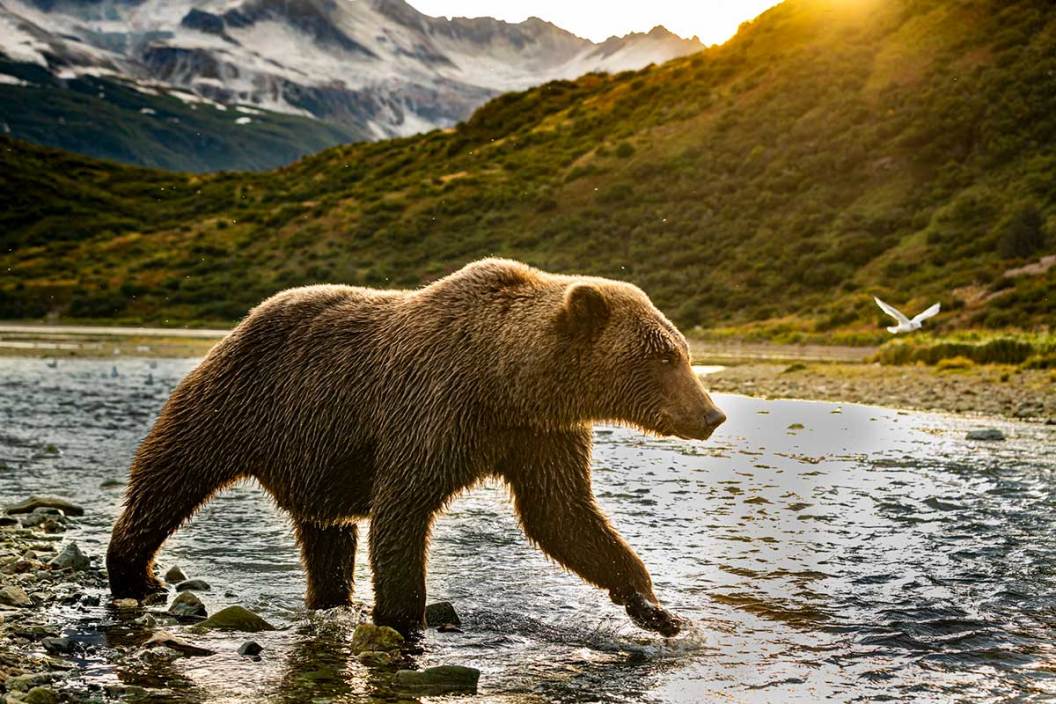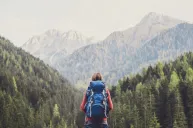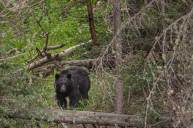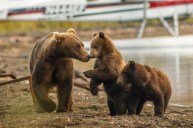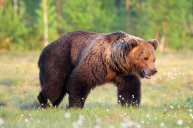As one of the biggest animals on planet Earth, bears have stirred awe, fear, and admiration in humans for millennia.
In North America, three species of bears roam the wilderness: grizzly, black, and polar. Black bears are by far the most common and can be black, brown, or even cream-colored. Grizzlies are found in areas around Yellowstone, many parts of Alaska, and in Canada. Polar bears live in the Arctic.
As spring is about to roll around and bears come out of hibernation, let's take a look at some things about Ursus that you might not know.
They use tools

SERGEI SUPINSKY/AFP via Getty Images
The ability to use tools has historically been accredited to humans and chimpanzees, but bears use tools as well. They'll overturn boulders with the flip of a paw while foraging. They have been seen using small rocks to scratch itchy noses and moving logs across creeks to avoid having to swim. Bears have the largest brain relative to body size of all carnivores, so it makes sense that they would have the spatial awareness and cognitive ability to put things to use.
They can sit and stand like we do
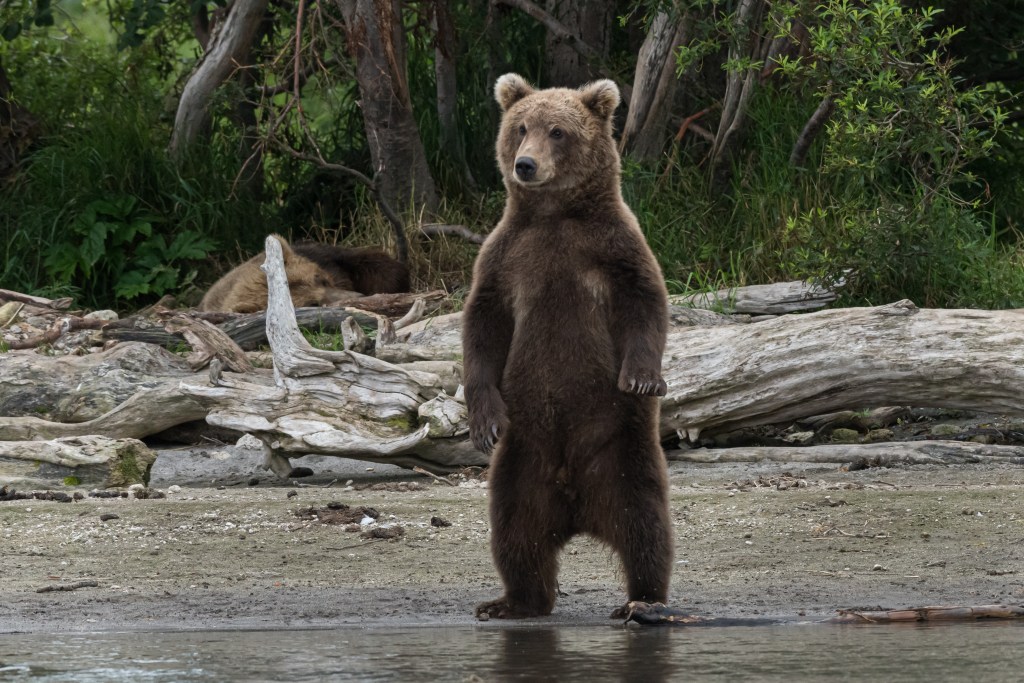
Roi Shomer/Getty Images
Despite being quadrupeds, bears are able to stand and even walk short distances on their hind legs. They do this to get a better view of the area around them, sniff for food, or posture to show exaggerated size in a fight. If a bear is standing it doesn't definitively mean it is about to attack - it's just its way of checking out the lay of the land.
They're predictable
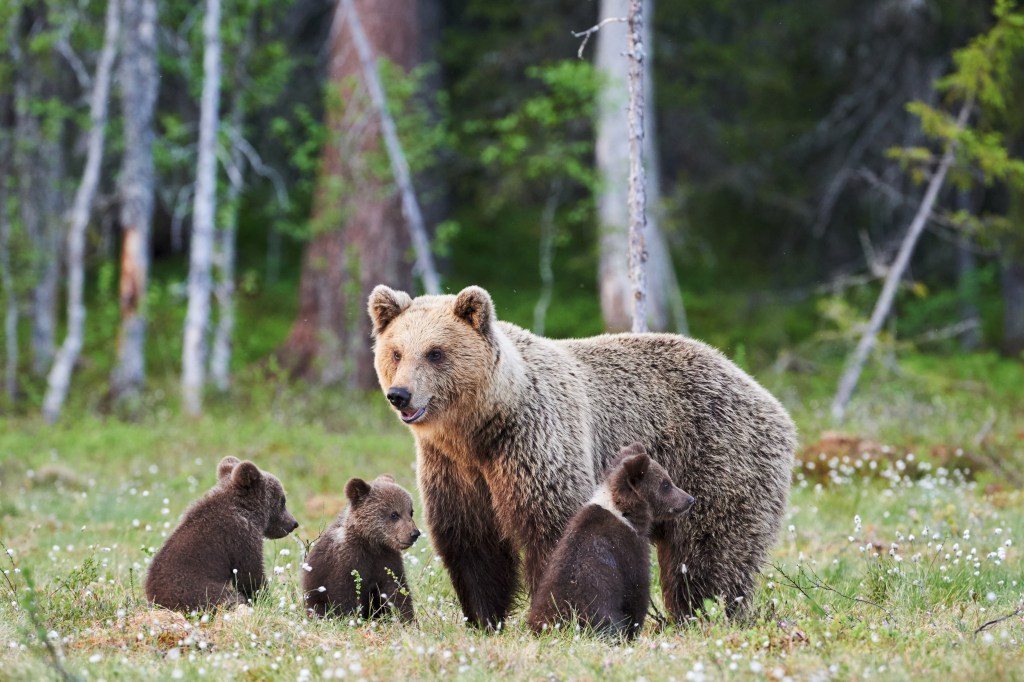
LuCaAr/Getty Images
In fiction, bears often come off like bloodthirsty, ferocious beasts that'll suddenly spring out of a thicket and attack defenseless hikers on the trail. In fact, bears are pretty predictable, once you get to know their behavior. They use body language and vocalization to signal intent, and they'd really rather avoid you than claw your face off.
They are not territorial
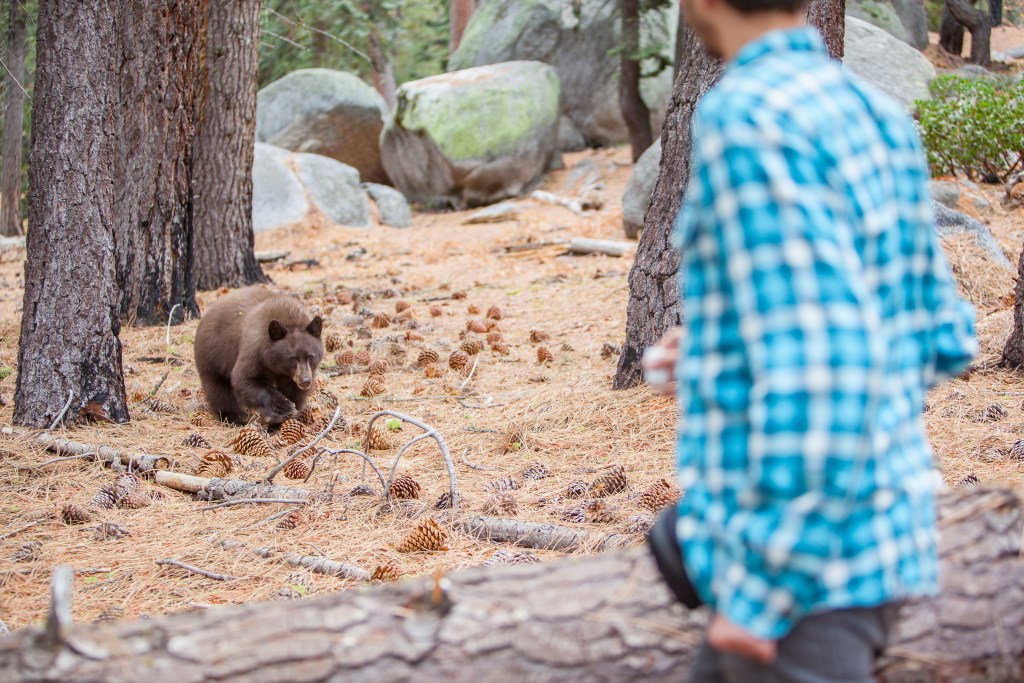
Alex Potemkin/Getty Images
Unlike wolves and cougars, bears share home ranges in a mutual use of resources that also influences their social behavior. This means they can become used to people to the point that they may not even pay attention as they cross your path. That said, they will react in a "strange object response" to something unexpected in their environment which first alarms them, then they'll investigate what it is.
They're noisy
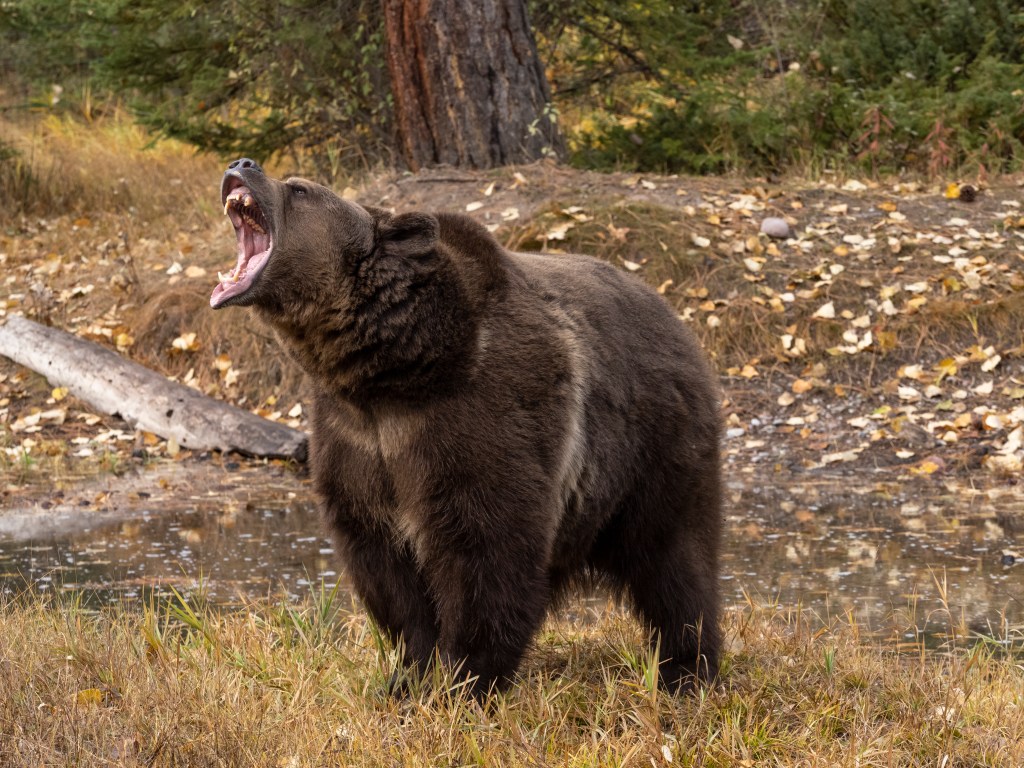
GrysFRP/Getty Images
Besides roaring, bears make all kinds of noise! Stressed-out bears may huff and puff, snort, or moan, while in friendly situations they grunt and click their tongues. When excited or alarmed they may bark, and warning sounds range from jaw-clicking to teeth-chattering to growling. When content and happy, cubs even make a purring hum.
Not all of them climb trees that well
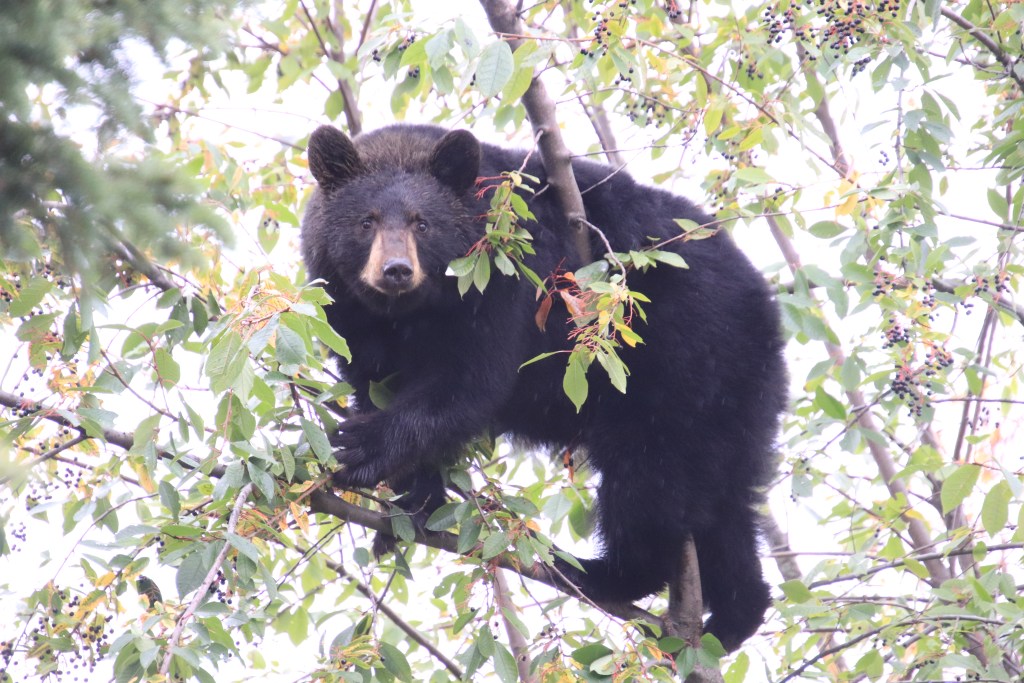
R Lolli Morrow/Getty Images
Black bears like this one balancing on a thin branch are terrific climbers and will run from a threat or climb up high to escape. Grizzly bears can climb trees, but they're not great at it thanks to their size and long claws - they're more likely to defend their cubs on the ground, whereas a black bear mama will tree her cubs to protect them. An adult bear could beat Usain Bolt in a sprint - they can run up to 40 mph.
The grizzly bear's hump, explained
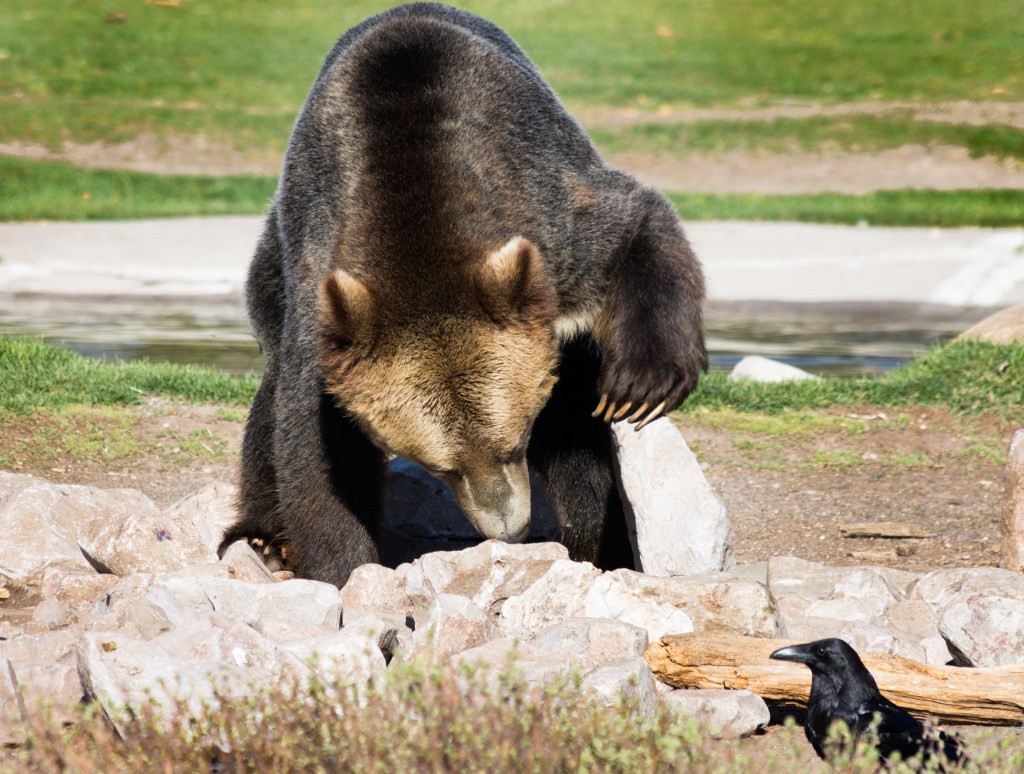
Teresa Otto/Getty Images
That large mass is actually a powerful muscle that helps the grizzly, which digs more than any bear species, tear apart rotted logs and burrow into the earth searching for roots, insects, and grubs. It also powers their dig out of winter dens that they make in steep, rocky terrain.
There's such a thing as a "grolar bear"
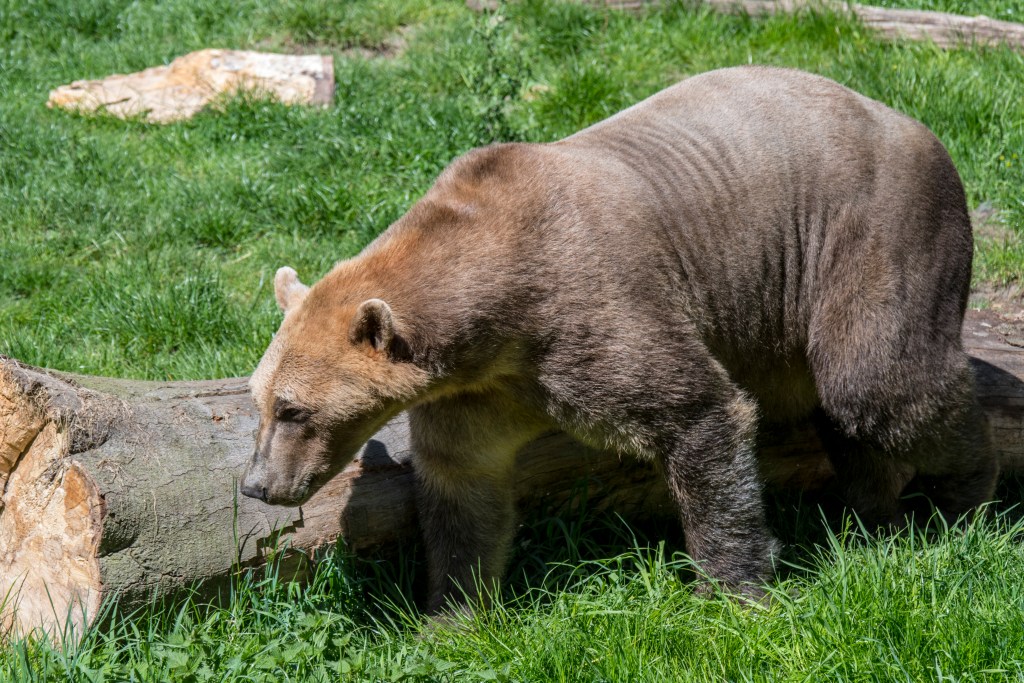
Philippe Clement/Getty Images
Polar bears and grizzlies share territory in parts of Alaska and Canada. Researchers have documented rare sightings of "grolar bears," also known as "pizzlies," a sort of superbear hybrid of polar and grizzly with big heads and light fur. Typically it's a result of male grizzlies venturing into arctic areas to mate with female polar bears.
Polar bears are classified as marine mammals
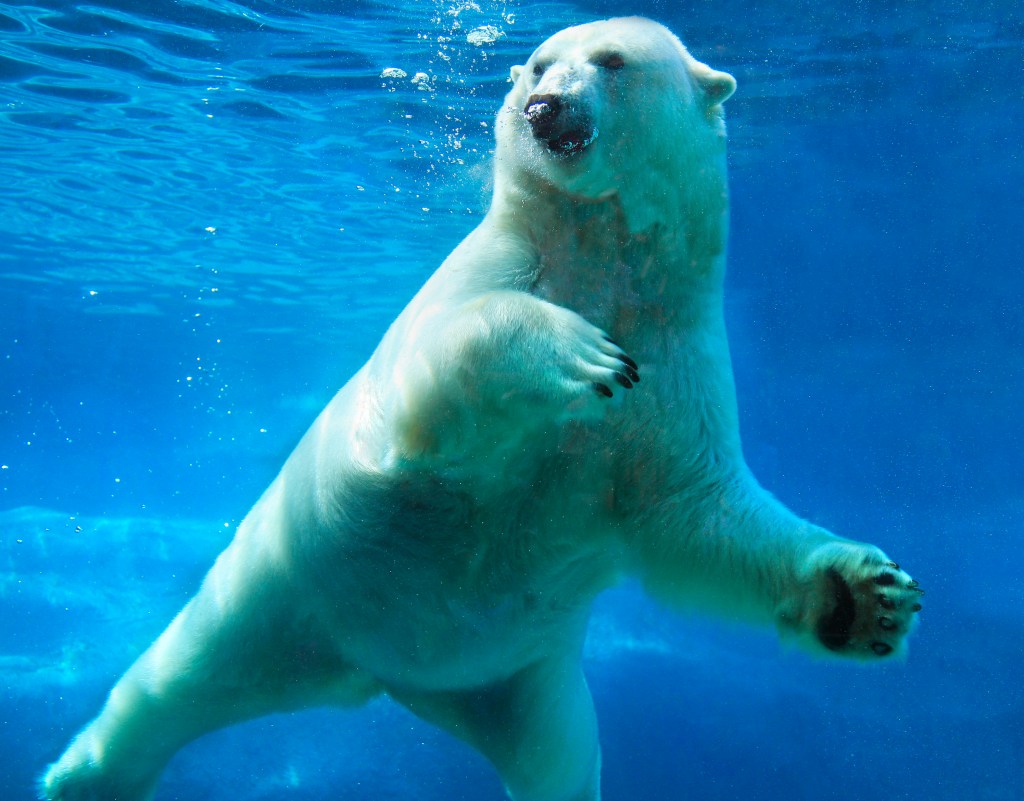
Vladone/Getty Images
They're the only bear to be considered a marine mammal because they spend their life on the ice and in the ocean. Polar bears have jet-black skin under all that fur, which serves as camouflage. In fact, their fur is actually translucent and reflects light to make it look white.
NEXT: EATING WILD HOGS: FACTORS AFFECTING QUALITY AND SAFETY
